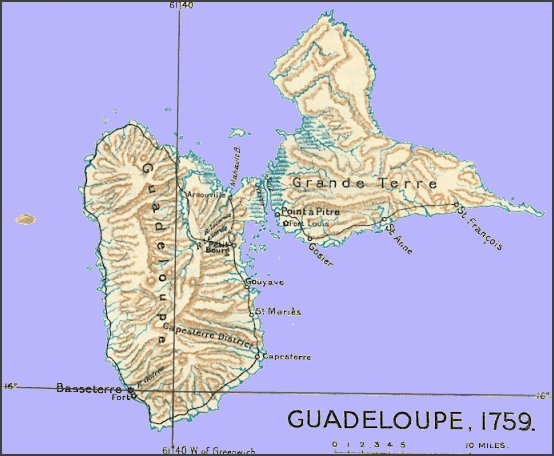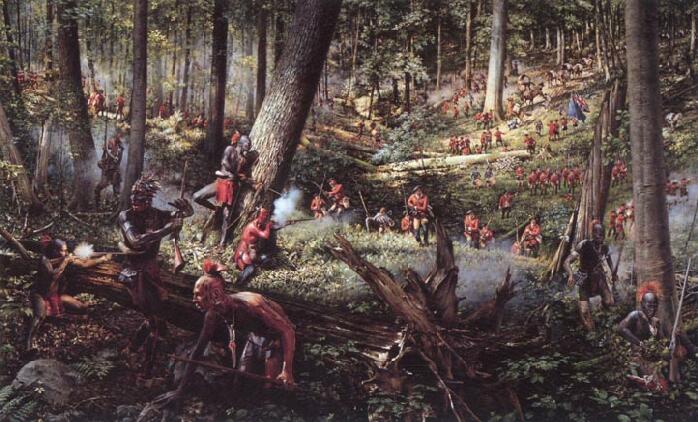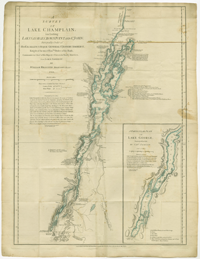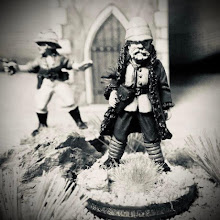Kin ye spell "Shock Infantry"?
I finished what I consider my "main" unit for my initial British Force for Rebels and Patriots (paid link). My Highland unit will be a Shock Infantry unit that is Big (18 figures) and Aggressive (+1) in Fighting. But more on that later when I post the entire, initial British Force.
History of the 42nd in North America for the French and Indian War:
- 1756
- 42nd Regiment comes to America, spends remainder of 1756
inactive in Albany.
- Winter/Spring 1757
- Regiment drilled for bush fighting and sharpshooting.
- July-August 1757
- Regiment sent to Halifax with 22nd, 44th, 48th, and 2 battalions of the 60th and 600 rangers to participate in planned attack on Louisbourg. The force was to be met by Fraser's and Montgomery's Highlanders and the 43rd, 45th, and 55th, which recently arrived from England. Returned to Albany after the attack was aborted due to a superior French naval presence.
- 5 July, 1758
- Force of 15,000 men (6,000 regulars) in nine hundred small boats and one hundred and thirty-five whale-boats, with artillery mounted on rafts, embarked on Lake George.
- 6 July, 1758
- Army advances on forward positions at Ticonderoga
Notice th' guy in th' rear rank ah knocked ower? Re-shoot!
8 July, 1758
- British forces engage Montcalm's French at Ticonderoga.
42nd participates in legendary charge on French lines and attempt to
storm the breastwork, with the following losses: 8 officers, 9
sergeants and 297 killed; and 17 officers, 10 sergeants and 306 soldiers
wounded. The officers killed were Major Duncan Campbell of Inveraw,
Captain John Campbell, Lieutenants George Farquharson, Hugh MacPherson,
William Baillie, and John Sutherland; Ensigns Patrick Stewart of
Bonskied and George Rattray. The wounded were Captains Gordon Graham,
Thomas Graham of Duchray, John Campbell of Strachur, James Stewart of
Urrad, James Murray; Lieutenants James Grant, Robert Gray, John Campbell
of Melford, William Grant, John Graham, brother of Duchray, Alexander
Campbell, Alexander Mackintosh, Archibald Campbell, David Miller,
Patrick Balneaves; and Ensigns John Smith and Peter Grant.
"The battle was not regarded as a disaster, but as a triumphant display of Highland gallantry. Though it achieved nothing, it showed a heroic temper, and without a heroic temper, an army is worth very little."
Eric and Andro Linklater, "The Black Watch" (London: 1977)
Okay. A' body is standing up noo.
22 July, 1758
- 42nd given 'Royal' designation. While the warrant was issued
on July 22, it was planned and issued before London had received
word of the battle at Ticonderoga, rather than in response to Ticonderoga as is sometimes said.
View the text of the Warrant that gave the Regiment its Royal distinction.
- October 1758
- 2nd battalion raised. So successful were the recruiting officers that within three months, seven companies, each one hundred and twenty men strong were embodied at Perth. Although Highlanders only were admitted, yet two officers, anxious to obtain commissions, enlisted eighteen Irishmen, several of whom were O'Donnels, O'Lachlans, O'Briens, &c. The O was changed to Mac, and the Milesians passed muster as true Macdonels, Maclachlans, and Macbriars, without being questioned.
Winter 1758
Spend winter rebuilding ranks on Long Island.
- January - 2 July 1759
- 2nd Bn. sent to West Indies, where it fought at Martinique and Guadaloupe. 193 of 700 men lost, as well as 25% of the battalion's officers, many to ilness from the tropical weather.
- 12 January, 1759
- 5 companies of 2nd Bn. sails with fleet from Barbados to Martinique.
- 16 January, 1759
- 2nd Bn. and fleet arrive in Fort Royal bay. Forces land and spend several days on the island.
- 20 January, 1759
- British forces re-embark and sail for Guadeloupe.
- 23 January, 1759
- British fleet bombards Fort Royale, setting portions of it on fire.
- 24 January, 1759
- 2nd Bn. guards artillery camp north of town.
- 14 February, 1759
- 2 companies of the 2nd Bn. - Late to campaign in West
Indies after being separated at sea - land at and take Fort Louis,
Guadeloupe.

Guadeloupe, 1759
(John Fortescue's History
of the British Army Volume 2) - 11 March, 1759
- 5 companies of 2nd Bn. with main fleet joins other 2 companies at Fort Louis.
- 12 April, 1759
- All 7 companies of the 2nd Bn., together for the first time, engage the French at the river Licorne. The Highlanders attack with swords, driving away the French and taking 70 prisoners.
- 19 April, 1759
- Army marched to Capesterre district, where the inhabitants surrendered the island.
- 11 May, 1759
- Part of 1st Bn. encamped above Albany.
- 12 May, 1759
- Amherst notes in his journal that he deployed one company of the 1st Bn to Scorticock to guard oxen being sent off to graze.
- 20 May, 1759
- 200 of the 42nd escorts batteux up the Hudson.
Lake Champlain
- 23 May, 1759
- Amherst records that 2 companies of 1st Bn. up river to encamp at Stillwater.
- 1 June, 1759
- Amherst orders remainder of 42nd, among others, to Fort Edward.
- 7 June, 1759
- 42nd arrived at Fort Edward "half drowned", according to Amherst.
- 19 June 1759
- 42nd, Montgomery's Highlanders assembled at Fort Edward.
- 22 June, 1759
- 1st Bn. encamped on southern edge of Lake George.
- 15 July, 1759
- 2nd Bn. arrives at New York from West Indies.
- 22 July, 1759
- Amherst's army arrives at Ticonderoga.
- 26 July, 1759
- French forces withdrew from Ticonderoga and set fire to the fort.
- August/Sept 1759
- 1st Bn. reconstructing Fort Crown Point.
Fortifications at the
mouth of the Oswego River - 1 August, 1759
- Amherst sends Major Graham to Oswego to command 2nd Bn.
- 3 August, 1759
- 2nd Bn. marches along the Hudson from Albany to join the rest of the army. Graham meets the Bn. and turns them back to Albany, up the Mohawk towards Oswego.
- Late August, 1759
- 2nd Bn. arrives at Oswego, and put to work building Fort Ontario.
- Winter, 1759
- 2nd Bn. brought in together with the 1st Bn. in Albany for the winter, primarily at Fort Edward, with companies at Halfway Brook, Fort Miller, Saratoga, Stillwater, and Half Moon. (Sons of the Mountain, vol 1, p 164)
- 7 August, 1760
- 1st Bn., Grenadiers, Light Infantry take post at La Galette.
- 10 August, 1760
- Army embarks up the St Lawrence towards Montreal.
- September, 1760
- Both battalions served in the army under Amherst, which moved down the St. Lawrence. Recieved the surrender of Montreal, together with that of the French Governor-General and the French army.
- Winter 1760-61
- Both battalions remained in Montreal for the winter.
- 4 April - 5 August, 1761
- Moved from Montreal to Staten Island, to set out for West Indies.
- October, 1762
- Regiment returns to New York.
- 1763
- Regiment selected to force led by Colonel Henry Bouquet protecting North American colonies, with a detachment of Montgomery's Highlanders, and the 60th.
- July 1763
- 42nd sent to the relief of Fort Pitt.
- Light Company
- 5 August, 1763
- Light and grenadier companies, along with Henry Bouquet's
Royal Americans, ambushed by Indians at Bushy Run.
The 42nd suffered losses of Lieutenants John Graham and James
Mackintosh, 1 sergeant, and 26 rank and file killed; and Captain John
Graham, Lieutenant Duncan Campbell, 2 sergeants, 2 drummers, and 30 rank
and file wounded. Bouquet confuses the enemy the next day and traps them in a double envelopment killing many of the enemy.

- 28 November, 1763
- Arrived at Fort Pitt.
- Th' 42nd Hielan regiment light company
- 1 December, 1763
- 3 companies of the 42nd stayed at Fort Pitt. Bouquet notes in a letter to Gage that for the winter, the rest of the regiment sent to other posts in the area: 1 company to Fort Ligonier, 1 to Fort Bedford, and 3 companies to Carlisle.
- Winter 1763-1764
- Spent winter at Fort Pitt.
- Summer 1764
- 8 companies sent with a force under Col. Bouquet against Ohio Indians, along with 60th regiments's Light co., 600 Virginia Marksmen, and a detatchment from Maryland and Pennsylvania dressed in the manner of the Indians.
- 13 October, 1764
- Expedition reached Tuscarawas River in Ohio.
- Late October, 1764
- Expedition moved to Muskingum River.
- 18 November, 1764
- Departed for Fort Pitt
- August, 1765
- Captain Thomas Stirling leads a detachment of 100 men down the Ohio, where they took possession of Fort Chartres in October. The detachment remained at Chartres for the winter.
- 1766
- Part of the regiment leaves Fort Pitt for Philadelphia, and were joined by the Illinois expedition in June. After 10 months and 3000 miles, every man of the Illinois detachment returned in perfect health.
- February 22, 1767
- A letter from Gage showing the distribution of troops in North America reports that 6 companies of the 42nd were stationed in Philadelphia, and 3 were still at Fort Pitt.
- Th' 42nd hielan regiment is duin fur thair foremaist battle!


















They look awesome together, Neil. One of favorite units, particularly in the F&IW.
ReplyDeleteThanks Dean. I was looking forward to leading them into battle but I diced with Honorable Son #5 (The Skirmisher) for sides and he choose the British. I am now painting the French force so we will see what they can do. With Rebels and Patriots they are going to be Shock Infantry, Large Unit and Aggressive. Yikes!
DeleteGreat looking figures and great info too.
ReplyDeleteThanks Ray. I'll take credit for the painting but the info I have to give credit to Honorable Son #1 (The Librarian). He is a Librarian at a major University in the USA and his specialty is research and cross-researching within multiple disciplinary fields. As a (retired) Military Historian it pays to have a researcher on the payroll.
DeleteTop notch unit!!
ReplyDeleteThank you Phil. You've got some interesting projects going on on your site I see.
DeleteVery impressive work on your Highlanders, Neil!
ReplyDeleteThanks Jonathan. Warlord Games can be uneven in their quality of sculptures; some great, some so-so. These I thought were great which makes the painting so much easier. Take care!
DeleteNeil
Great looking Highlanders Neil! I scrolled through in detail to see how you painted the kilts because that looked very effective indeed. Those grenadiers in particular look magnificent!
ReplyDeleteBest wishes,
Jason
Jason,
DeleteThank you very much. I have a 2 part painting guide coming up on how I painted the unit. Thanks again!
Neil